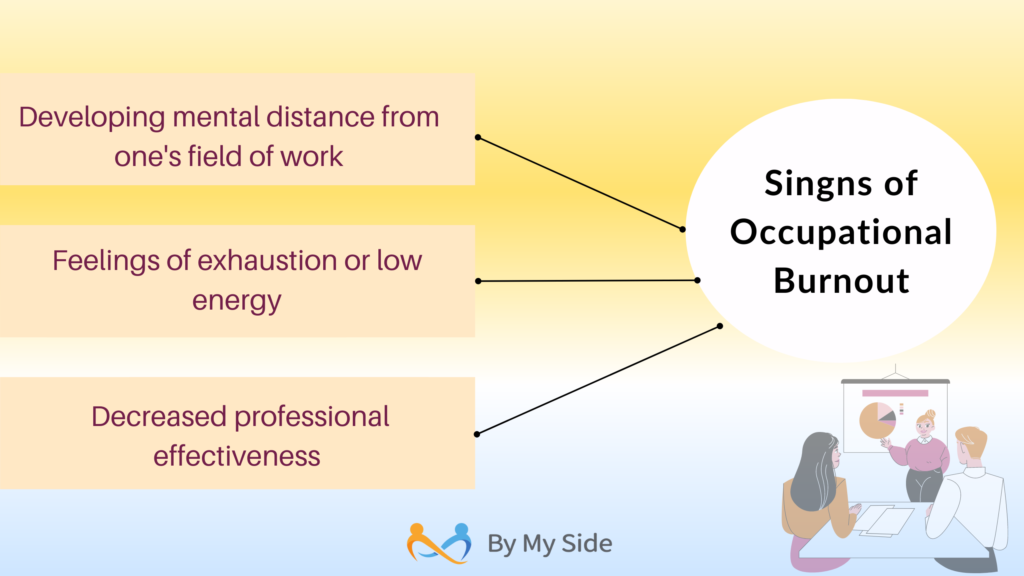According to the World Health Organization (2019), burnout is a syndrome caused by chronic workplace stress that has not been adequately controlled.

It is distinguished by three dimensions:
- sensations of energy depletion or tiredness
- increasing mental detachment from one’s profession,
- thoughts of negativism relating to one’s job; and lower professional efficacy.
Let’s look at a few strategies on how to avoid occupational burnout in an effective and practical way.
1 – Slow down and take a breath
We may forget our emotional and spiritual needs, physical care, and ties with those we love as a result of our fast-paced living rhythm. It is easy to get caught up in work goals and deadlines, but taking care of our emotional, spiritual, and physical needs is crucial for a healthier work experience.
2 – Set healthy boundaries with work
Dedicate time each day to disconnect from work to recharge and clear your mind. This helps prevent burnout by acknowledging our limited energy.
3 – Lower your expectations
High expectations increase the risk of burnout. Therefore, it is important to make sure to regularly re-evaluate and adjust your expectations to be realistic.
4 – Create a stress management plan
One of the things that increases the impact of stress is the feeling of helplessness towards it. Plan to deal with stress by breaking down responsibilities into manageable tasks and taking control of the situation.
5 – Practice self-compassion
Many believe that continuous self-criticism is the best way to push ourselves to be more productive, but self-criticism can lead to burnout and may wreck our sense of self-reassurance. Therefore, it is crucial to strive for self-compassion through activities like meditation, journaling, or other self-acceptance practices. Taking a few small steps a day can help boost self-esteem and reduce stress.
